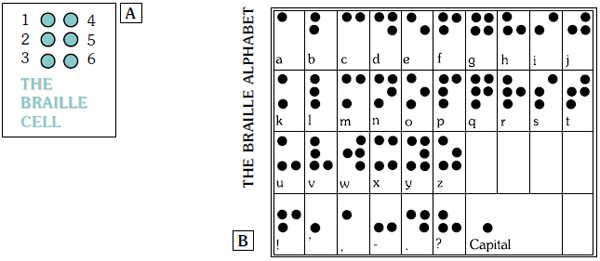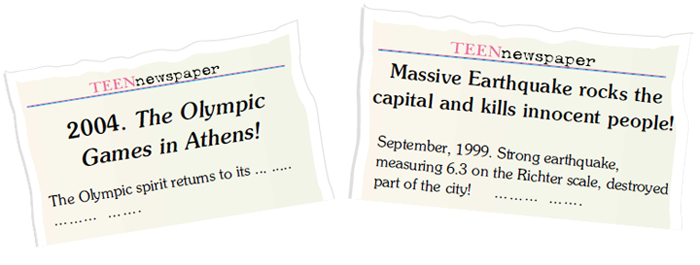|
Guessing words from context
1
|
Read these extracts from the interview with Tom. In pairs, try to
guess and explain what the expressions in bold mean. Then, tell
the class. |
 |
a. Braille became blind by accident when he was only three years old.
b. How did he come up with the idea of his code?
c. Soldiers used this code to share top-secret information during a battle.
d. Each dot has a numbered position on the Braille cell.
e. I can read a sign or a book just by touching these dots with my fingers.
f. You can see Braille signs in most public places.
g. The asteroid 9969 Braille was named after him.
h. Thanks to you, I'll write a great article for our newspaper.
2
|
In pairs, choose four of the expressions above (a-h) to make sentences with. |
Punctuation Marks
3
|
Match the
punctuation marks
with their names.
Then, listen and
check. |
|
a. full stop
b. comma
c. question mark
d. exclamation mark
e. capital letter
f. bracket
g. hyphen
h. apostrophe
|
 |
This text will be replaced
|
 |
4
|
Read the following message
and say what the BRC is.
Then, in pairs, add the right
punctuation marks in the
message. |
|
braille reading club BRC
do you want to talk with other kids about the new Braille
best sellers
visit the reading club e message board
you can learn about prices bookshops and authors
don t miss it |
Disabilities
5
|
What do you know about these people? Match (a-c) with
(1-3). Then, choose from the Word Bank what can help
each group in their everyday life. |
a. The blind / Blind people ...
b. The deaf / Deaf people ...
c. The disabled / Disabled people ... |
1. can't hear.
2. can't use a part of their body.
3. can't see. |
| e.g. Beethoven was deaf. |
|
UNIT 8
|
|



